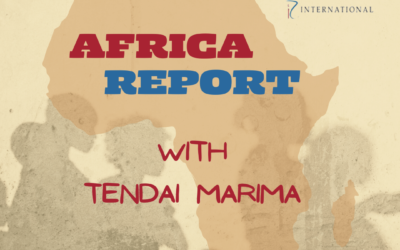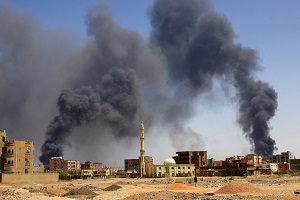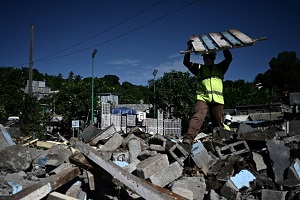Radio Islam and Agencies | 15 Jumadal Ukhra 1438/14 March 2017
The depth of suffering faced by Syria’s children over the past year is unprecedented, two new reports have highlighted.
“Millions of children in Syria come under attack on a daily basis, their lives turned upside down. Each and every child is scarred for life with horrific consequences on their health, well-being and future,” UNICEF Regional Director Geert Cappelaere said in a statement coinciding with the agency’s release Monday of a report that revealed 2016 to be the worst year yet for Syria’s children.
Relatedly, Save the Children has published research indicating that one in four Syrian children, or around 2.5 million, are on the brink of developing a mental health disorder.
Children living in war-torn Syria, some as young as 12, are self-harming, taking drugs, and attempting suicide to escape the horrors they have endured after six years of conflict, the international aid group said on Monday in the most comprehensive report of its kind to document the mental health of children in Syria.
Nightmares, bedwetting, anger, suicidal thoughts and depression are a few of the symptoms plaguing Syrian children, who suffer from an endless barrage of trauma from bombings, death and destruction, it said.
Most of the children interviewed for the report were too fearful to play outside, have dropped out of school, or have witnessed the death of a friend or relative.
“About five to six months ago, a child who was 12 years old committed suicide. We never had something like this before, even for older people,” Syrian mental health worker Sharif was quoted as saying in the report.
“His dad was killed in a car bomb. They tried to explain to the child that now your dad is a martyr and he is going to paradise, so the child thought that if he died he would see his dad. He hung himself with a scarf.
Psychologist Marcia Brophy, who spoke to 458 Syrian adults and children for the report, said living in a constant state of fear and anxiety, known as “toxic stress”, could lead to serious long-term health issues.
“These children, their bodies are in constant ‘fight or flight’ – and that accumulative level of toxic stress will undoubtedly have huge long-term consequences … and it could lead to lifelong medical issues as well,” said Brophy.
More and more children were self-harming, taking drugs and attempting suicide, Brophy told the Thomson Reuters Foundation, and they were doing so at an increasingly younger age.
“It’s incredibly troubling. But it’s not really surprising given that these children are living in a highly stressful environment,” Brophy said. “It’s a way of coping and dealing with a really abnormal, stressful situation.”
She said communities should talk more openly about mental health, and aid agencies must make mental health support a priority across all humanitarian situations.
“It’s a taboo issue, it’s very hard to talk about. Given that this is a protracted conflict situation … we need to have mental health and psychosocial support integrated into any emergency response,” Brophy said.
Deadliest Year
Considering overall conditions for Syrian children, the United Nations says despite an ongoing ceasefire, deadly continue, making 2016 constitute “highest on record” level of “grave violations against children” in Syria since the war began in 2011.
“Verified instances of killing, maiming and recruitment of children increased sharply last year in a drastic escalation of violence across the country,” the report said.
According to the report, at least 652 children were killed in the last year, making 2016 the worst year for Syria’s children since verification of child casualties began in 2014.
Of that number, 255 children were killed in or near a school in 2016, UNICEF said.
The number of child fatalities in 2016 was at least 20 percent higher than in 2015. At least 647 children were also reported injured, including Majed.
There were also at least 338 attacks against hospitals and medical personnel.
In one incident in November, Al Jazeera captured the moment an air raid hit a children’s hospital in eastern Aleppo, forcing medical staff to evacuate patients, including several newborn babies still in incubators.
“The depth of suffering is unprecedented,” Cappelaere said.
Aside from the child fatalities, UNICEF also recorded that more than 850 children were recruited to fight in the conflict – double the number recruited in 2015.
“Children are being used and recruited to fight directly on the front lines and are increasingly taking part in combat roles, including in extreme cases as executioners, suicide bombers or prison guards.”
After six years of conflict, nearly six million children now depend on humanitarian assistance, a twelve-fold increase from 2012, with millions of children being forced to evacuate multiple times.
UNICEF said that reporting in some areas remains a challenge, with 2.8 million children living in hard-to-reach areas, including 280,000 living under siege and cut off from humanitarian aid.
“Beyond the bombs, bullets and explosions, children are dying in silence often from diseases that can otherwise be easily prevented,” the report said.
“Access to medical care, life-saving supplies and other basic services remains difficult.”
More than 2.3 million Syrian children are now living as refugees in Turkey, Lebanon, Jordan, Egypt, and Iraq, the report said.
Those who have managed to stay or return to their homes, are no less vulnerable to life-threatening risks, such as unexploded ordnance.







0 Comments